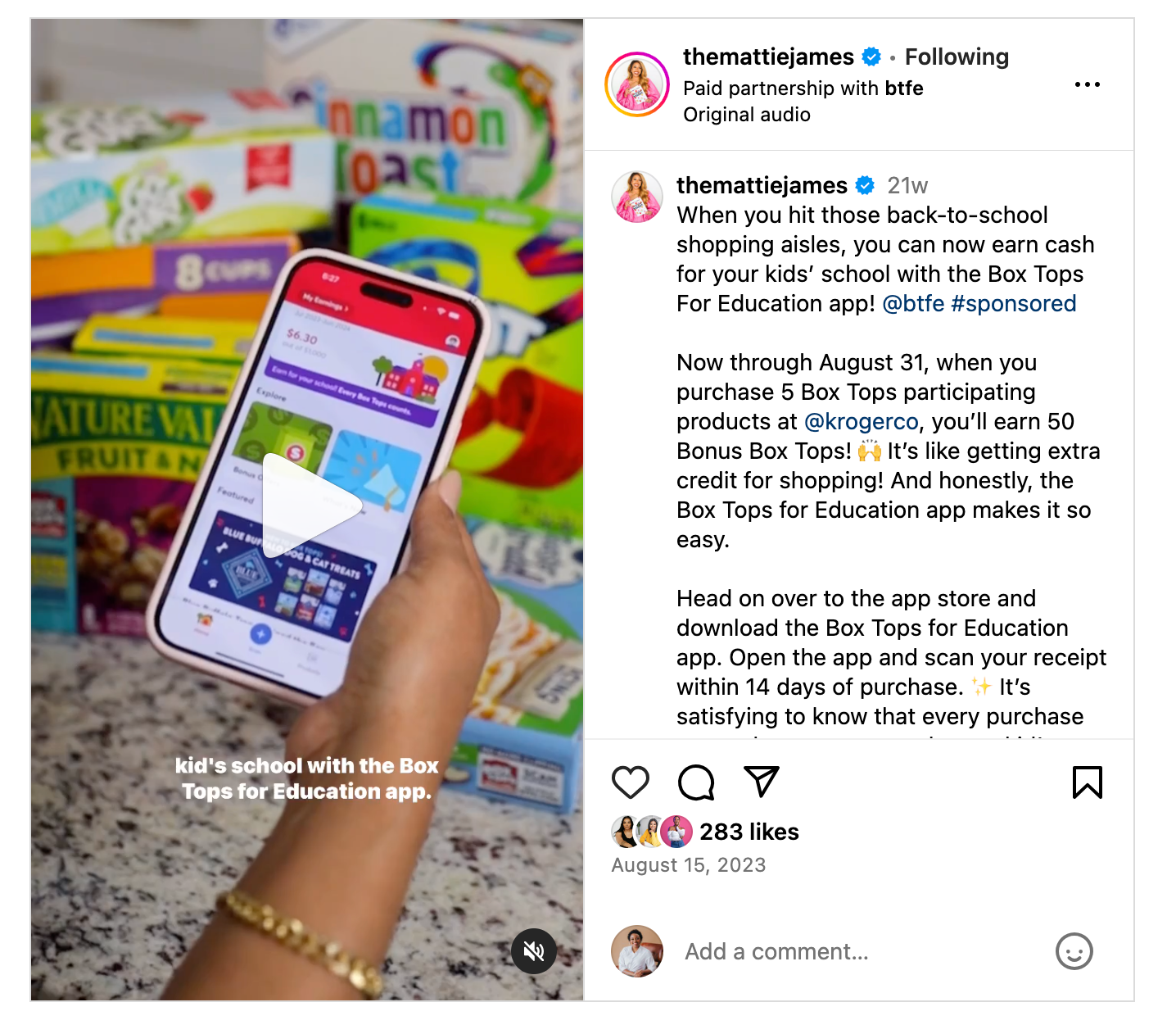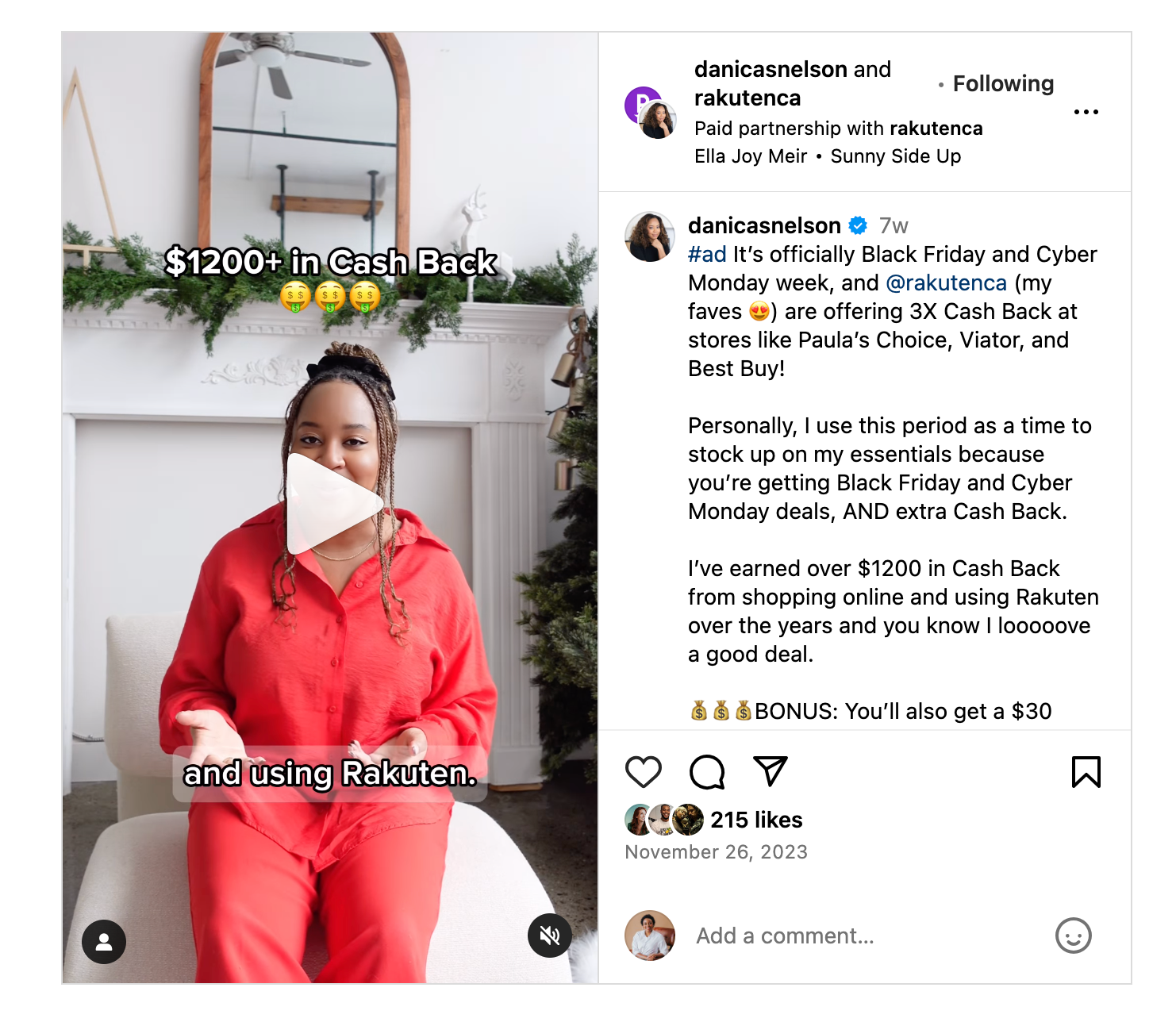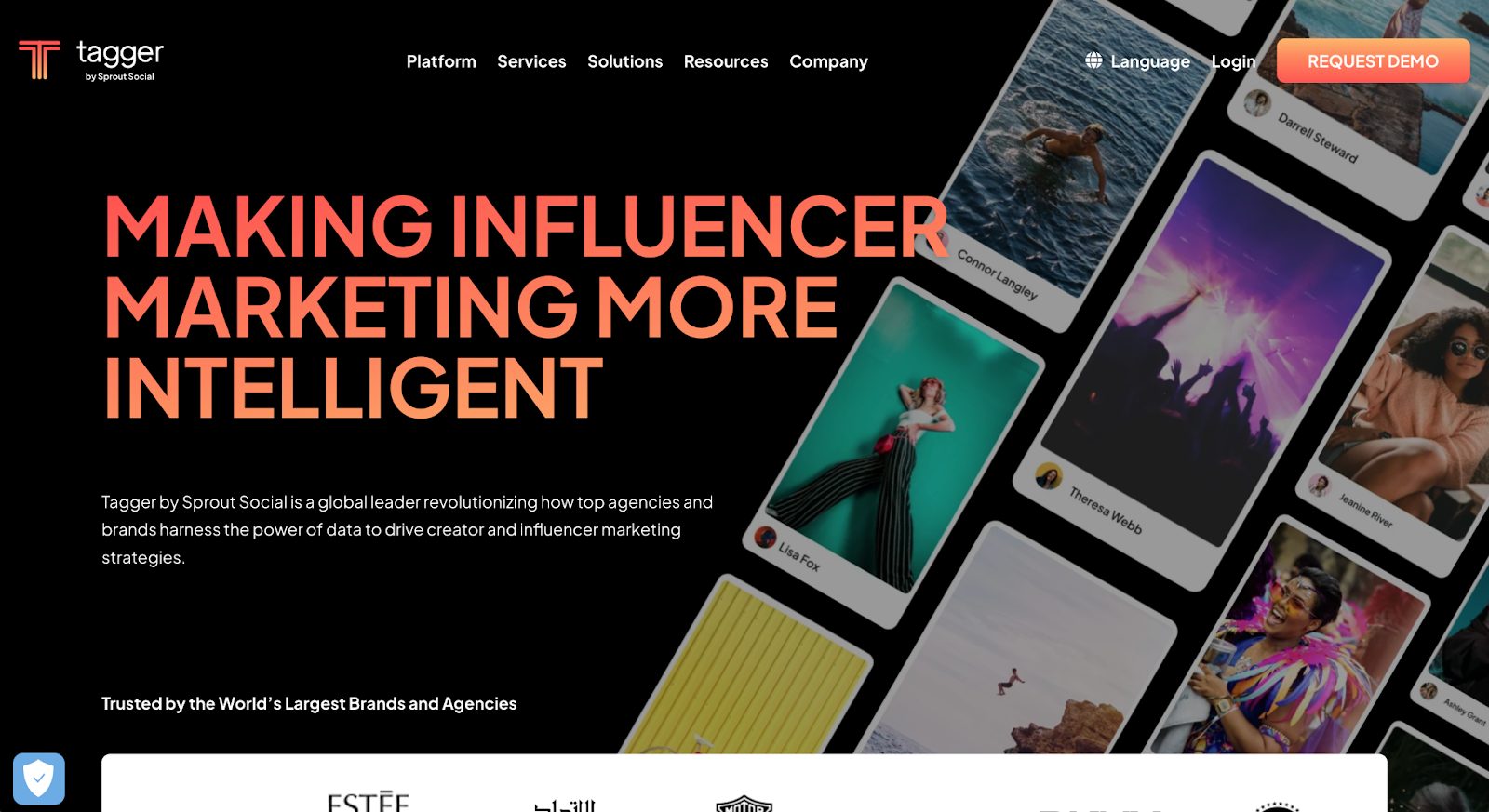Influencers are everywhere. You’ve probably seen a few #sponsored and #gifted posts in your social media feeds today. That’s because influencer marketing is a powerful growth tool for brands.
Getting in front of an influencer’s engaged followers helps brands reach a wider audience of potential customers. Influencer partnerships also build credibility. A popular influencer promoting a brand lends authenticity to its marketing message, making it seem more trustworthy by association. Our recent Sprout Social IndexTM found that a quarter of consumers (25%) feel creator and influencer collaborations can make a brand more memorable on social media.
In this article, we’ll cover how to find influencers for your marketing campaigns. You’ll learn all about what influencers do, the different kinds of influencers, where to find them and how to vet them once you do.
What is an influencer?
An influencer is someone with a dedicated social following who has sway over an audience in a particular niche or industry. Influencers often have specialized knowledge, authority or insight into a specific subject.
Influencer marketing has been around for decades through celebrity endorsements. However, as more advanced measurement tools become available, influencers’ roles in marketing will shift in 2024. It will be less about their popularity and follower count and more about driving conversions and providing a clear ROI.
Influencers humanize brands and help them foster a more genuine, real-life connection with their audience. And with the rise of generative AI tools, consumers crave authenticity and human connection like never before. This is where influencer partnerships will shine.
What is the difference between an influencer and a creator?
Digital creators and influencers—are these interchangeable terms? Not quite. The main difference is an influencer shares sponsored content, whereas a creator develops original content. While there’s certainly overlap in what they do—content creators have influence, and influencers create content—the intent is different.
An influencer’s primary intent is to encourage their followers to purchase a specific brand, product, service etc., as they have a financial incentive to do so (i.e., they were paid a promotional fee or earn a commission from sales).
In comparison, a content creator’s primary intent is to create engaging and valuable content for their audience. They may also create content that brands market as their own, working behind the scenes. They could have a large audience, but their content is more the focus vs. their lifestyle. They may also monetize their work through sponsorships but often have other revenue streams like subscriptions, memberships, digital products and fan contributions.
Know your target audience before searching for an influencer
Partnering with an influencer with a large following may help you increase brand awareness, but if you want the most bang for your buck, you should work with influencers who can get your brand in front of the right people.
Knowing your target audience allows you to choose influencers with audiences and social channels that align with your brand. Plus, when you understand what your audience likes, you can pick influencers you know they will relate to.
For example, it makes sense for a fitness brand like Athleta to partner with an athlete influencer, like figure skating champion Mariah Bell, over a more generic lifestyle influencer with a larger audience. As of the time of writing this article, Mariah has an engaged following of over 100,000 fitness enthusiasts, making her a strong match for the brand.
Mariah’s expertise as a professional athlete adds trustworthiness to her recommendations. Plus, since she regularly posts practice sessions, content about her training in the brand’s products fits with the rest of her and Athleta’s content.
What are the four types of influencers?
Based on follower count, there are four main types of influencers: mega-influencers, macro-influencers, micro-influencers and nano-influencers.
We’ll break down each type, sharing examples and the pros and cons of working with each.
Mega influencers
Mega influencers have massive, million-plus followings. Famous actors, musicians, athletes and other public figures often fall into this category, but many social media stars have achieved mega-status.
For example, Helen Christie is a UK-based content creator and actor with close to two million TikTok followers and one million YouTube subscribers. She’s partnered with brands like Disney+, Meta, Monzo and Channel 4.
Mega influencers offer unprecedented exposure for brands, but it comes with a mega price tag. This type of influencer partnership could work well if you’re a brand with mass appeal (e.g., tech, food, big box retail) and a large marketing budget.
Macro-influencers
Macro-influencers are famous social media personalities with audiences within the 100,000 to one million follower range. They are considered go-to voices within a particular niche, such as food, beauty or lifestyle.
For example, Mattie James is an Atlanta-based lifestyle influencer and author who has partnered with brands like Samsung, T.J. Maxx, Kroger and J. Crew.

Like mega influencers, macro-influencers have substantial reach—with a hefty price tag. However, since they often have a more niche audience, a macro-influencer partnership could work well for brands looking to reach a specific but large audience. For example, since Mattie is a Black millennial mom, she’d be a good fit for brands looking to reach this demographic interested in clothing or skincare.
Micro-influencers
Micro-influencers have audiences of 10,000 to 100,000 followers. They may not have the reach of mega and macro-influencers, but studies have found that they often have a higher engagement rate, meaning followers see, like, comment on and share their content more often. They also tend to be more affordable than more prominent influencers.
For example, Serena Lalani is a digital creator who’s grown a TikTok audience of over 16,000 followers by vlogging about her life in Montreal, Canada. She’s partnered with brands like Murad Skincare and Osheaga, a Montreal-based music festival.
Nano-influencers
Nano-influencers have less than 10,000 followers, but what they lack in size, they often make up for in engagement. They’re helpful for reaching specific communities and demographics at an affordable rate.
For example, Danica Nelson is a Canadian finance and travel creator who has worked with brands like Mydoh, Rakuten and Porter Airlines.

How to find influencers for your brand
Figuring out how to find influencers for your brand can take time and effort. There are plenty to choose from, but you should only work with influencers whose personal brand and content align with your brand’s image and messaging.
So, how do you find the right influencers for your brand? Here are some ways to discover and connect with influencers, from influencer marketing platforms to good old-fashioned networking.
1. Use an influencer marketing platform
Influencer marketing platforms are tools that simplify influencer marketing campaign management. They offer a range of features, but many have search tools to help brands find their perfect influencer match.
For example, Sprout’s influencer marketing tool, Tagger by Sprout Social, helps you harness the power of social data to drive influencer marketing and creator strategies. Use the tool to craft a data-driven marketing strategy that resonates with your target audience by analyzing industry trends, social content, posts and profile data. Discover creators who match your brand values and collaborate seamlessly with teams to ensure a smooth and efficient campaign execution.

Tagger’s profile discovery tool, with over 50 search filters, helps you find influencers that match your exact criteria. It also has an affinity engine, which uses machine learning and audience psychographics to identify brands and creators with a strong affinity. Also, use the Sync feature to build custom landing pages to attract, qualify and capture prospective influencers for brand partnerships.
2. Social media
Trending industry posts are great for discovering influencers. If you notice a post going viral, see who published it and whether they have a substantial and active following. Also, look at the comment section of a popular post to see if any influencers are engaging with it.
If you’re looking for LinkedIn influencers, search a relevant keyword and set the filter to ‘Posts.’ Scroll through the results and look for posts with a high level of engagement (i.e., likes, comments, views, etc.). A lot of engagement is usually an indicator that someone has a large audience.
A simple content search for the term ‘SEO’ on LinkedIn led us to Danny Asling, a marketing professional with over 30,000 followers.


3. Hashtag searches
Use social media platforms’ search functions and look up keywords and hashtags related to your products or services to find influencers already creating relevant content. For example, an ethical clothing brand looking for TikTok influencers might check out the platform’s #sustainablefashion hashtag.

If you’re looking for Instagram influencers, use location-specific hashtags to find influencers in your area. Try a combination of your location, niche and words like ‘influencer,’ ‘creator,’ ‘blogger’ or ‘vlogger’ — like #atlantamomblogger.

4. Competitor analysis
Are your competitors working with influencers? While you might want to use different talent, check out their influencers’ audience and who they follow to find similar creators. Also, keep an eye on who gets a lot of likes or comments on your competitors’ posts, as they too, could be influencers.
Skincare brand Mario Badescu posted a Reel from lifestyle influencer Vanessa Zambito.

Looking at her followers led us to Elxi Elvina, a digital style creator with over 170,000 followers.

5. Social listening
Tracking social media mentions of your brand could lead you to influencers who already engage with your brand. Sprout Social offers social media Listening features like Trends Report, which will show you the hashtags and topics trending in your mentions and the people and brands that engage with your business the most.

6. Search engines
Try using Google to search social media sites. Here’s how:
Type “site:” followed by the name of the website you’re searching
Follow the website name with a single space and then type the search phrase
If you wanted to search for a beauty influencer in Detroit, you’d type the following into the search field: site:instagram.com “detroit beauty blogger”

A search like “your industry + influencers in X region” will help you find local influencers. You might also see some articles with lists of the best influencers in that region. For instance, if you’re a San Francisco-based cookware brand, a simple search for ‘Bay Area food influencer’ generates millions of hits.

7. Your network
One of the easiest ways to find an influencer is to ask for recommendations. Reach out to your network—colleagues, employees, friends, industry contacts, business partners, etc.—and see if they know any influencers that would fit your criteria.
You could also post about your influencer search on social media. Encourage your network to recommend or tag potential influencers in the comments and share or like the post to help boost its reach.

8. Industry events and conferences
Influencers may work online, but you can still connect with potential partners in person at events and conferences. Try attending creator-specific events like VidCon or CreatorConf to discover new influencers and gain tips and inspiration to optimize your next campaign.

Don’t have the budget to attend? Look up some events and conferences in your industry and see who’s speaking at them. Event organizers often hire influencers as speakers as their sizable audiences will attract attendees.
Knowing where to find influencers is just the first step. The next is discerning the real deals from the fakes. Unfortunately, some buy followers to inflate their audience size and appear more popular than they really are.
To spot a fake influencer, pay attention to their follower-to-engagement ratio and engagement quality. If an influencer appears to have many followers but doesn’t get a lot of likes or comments on their posts, or the comments are very surface-level and not specific to the post, they might be a fraud.
You found the perfect influencer. Now what?
Before you draw up a partnership agreement, vet your influencer to make sure they’re the best fit for you. Take a look at the content they’re creating. Does it align with your brand values? Are people engaging with it in a meaningful way?
You should also ensure your influencer knows what they’re talking about and has the experience or expertise to knowledgeably promote your product. Most established influencers have media kits that include insights on their audience, niche, follower demographics, follower growth, engagement metrics, content formats and platforms, which helps you vet potential brand partners.
Another important tip—think about what a potential partnership could look like. Check out some influencer marketing campaign examples so that when you pitch your influencer, you have concrete ideas to run by them.
A lot goes into influencer marketing, but you don’t have to do it alone. With Tagger by Sprout Social, leave all the heavy lifting to us. Find authentic creators, manage entire campaigns, measure your success and drive your brand growth confidently with end-to-end influencer marketing campaign management.